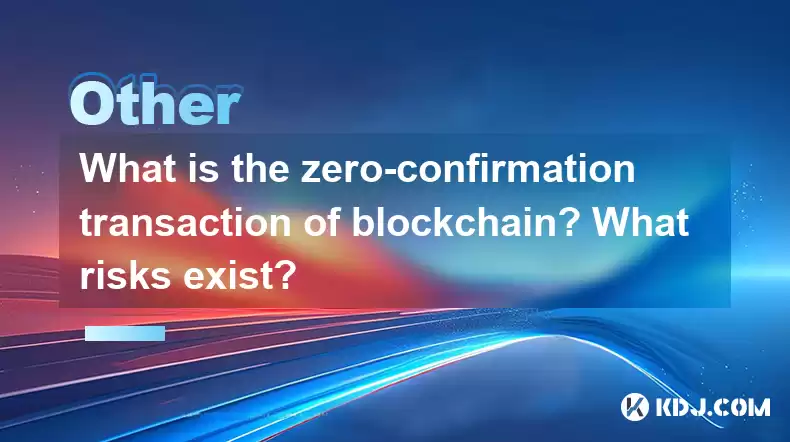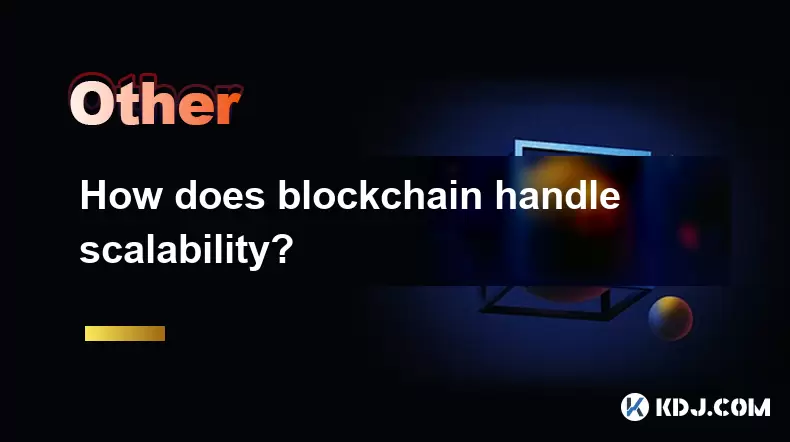-
 Bitcoin
Bitcoin $112400
-1.07% -
 Ethereum
Ethereum $3409
-3.27% -
 XRP
XRP $2.784
-6.60% -
 Tether USDt
Tether USDt $0.9997
-0.03% -
 BNB
BNB $739.3
-2.09% -
 Solana
Solana $158.0
-2.90% -
 USDC
USDC $0.9998
-0.02% -
 TRON
TRON $0.3213
-0.94% -
 Dogecoin
Dogecoin $0.1929
-5.01% -
 Cardano
Cardano $0.6974
-2.82% -
 Hyperliquid
Hyperliquid $36.69
-2.31% -
 Sui
Sui $3.327
-4.80% -
 Stellar
Stellar $0.3672
-5.18% -
 Chainlink
Chainlink $15.65
-3.07% -
 Bitcoin Cash
Bitcoin Cash $525.0
-1.68% -
 Hedera
Hedera $0.2291
-6.00% -
 Avalanche
Avalanche $20.91
-2.96% -
 Ethena USDe
Ethena USDe $1.000
0.00% -
 Toncoin
Toncoin $3.520
-1.12% -
 UNUS SED LEO
UNUS SED LEO $8.968
0.14% -
 Litecoin
Litecoin $105.7
0.26% -
 Shiba Inu
Shiba Inu $0.00001181
-1.79% -
 Polkadot
Polkadot $3.492
-2.08% -
 Uniswap
Uniswap $8.800
-3.10% -
 Dai
Dai $0.9999
-0.01% -
 Monero
Monero $289.9
-3.17% -
 Bitget Token
Bitget Token $4.243
-1.27% -
 Pepe
Pepe $0.00001006
-3.67% -
 Cronos
Cronos $0.1248
-5.68% -
 Aave
Aave $249.7
-2.50%
What is the zero-confirmation transaction of blockchain? What risks exist?
Zero-confirmation transactions enable fast processing but carry risks like double-spending; merchants use risk assessment and real-time monitoring to mitigate these issues.
Apr 27, 2025 at 04:14 pm

The concept of zero-confirmation transactions in blockchain technology refers to transactions that are broadcast to the network but have not yet been confirmed by being included in a block. These transactions are also known as unconfirmed transactions. They are immediately visible to the network, and in many cases, they are accepted by merchants and services as valid, even before they receive the required number of confirmations. This practice is particularly common in the Bitcoin network, where transactions can be considered valid after zero confirmations, especially for small amounts or between trusted parties.
Zero-confirmation transactions offer the advantage of speed, enabling faster transaction processing times which is crucial for certain applications, such as point-of-sale systems in retail environments. However, this speed comes with inherent risks, as these transactions can be reversed or double-spent, leading to potential financial losses for the recipient.
How Zero-Confirmation Transactions Work
When a user initiates a transaction on a blockchain network, it is broadcast to the network of nodes. These nodes verify the transaction's validity based on the sender's available balance and the correctness of the transaction's structure. Once verified, the transaction enters the mempool, a holding area for unconfirmed transactions awaiting inclusion in a block.
Miners then select transactions from the mempool to include in the next block they mine, prioritizing those with higher transaction fees. The transaction is considered confirmed once it is included in a block and subsequent blocks are added to the chain, making it increasingly difficult to alter.
In the case of zero-confirmation transactions, the recipient may choose to accept the transaction as valid before it is included in a block. This decision is based on various factors, including the transaction amount, the sender's reputation, and the network's current state.
Risks Associated with Zero-Confirmation Transactions
The primary risk associated with zero-confirmation transactions is the possibility of double-spending. Double-spending occurs when a user attempts to spend the same cryptocurrency more than once. Since zero-confirmation transactions have not yet been confirmed by the network, a malicious actor could potentially broadcast a conflicting transaction that spends the same coins, leading to the original transaction being invalidated.
Another risk is transaction malleability, where an attacker modifies the transaction ID before it is confirmed, causing the recipient to believe the transaction has failed. This can lead to the recipient releasing goods or services without receiving payment.
Additionally, network congestion can impact the reliability of zero-confirmation transactions. During periods of high network activity, transactions may take longer to be confirmed, increasing the window of vulnerability to double-spending attacks.
Mitigating the Risks of Zero-Confirmation Transactions
To mitigate the risks associated with zero-confirmation transactions, several strategies can be employed:
Risk Assessment: Merchants and services can assess the risk based on the transaction amount and the sender's reputation. Smaller transactions or those from trusted sources are less likely to be double-spent.
Real-Time Monitoring: Implementing real-time monitoring of the blockchain can help detect and respond to double-spending attempts quickly. Services can use APIs to track the status of transactions and take action if a conflicting transaction is detected.
Transaction Locking: Some blockchain networks offer transaction locking mechanisms, such as Bitcoin's Replace-By-Fee (RBF) and Child-Pays-For-Parent (CPFP) protocols, which can help secure transactions before confirmation.
Network Analysis: Analyzing the current state of the network, including transaction volume and fee rates, can inform decisions about accepting zero-confirmation transactions. During periods of low network congestion, the risk of double-spending is reduced.
Use Cases for Zero-Confirmation Transactions
Despite the risks, zero-confirmation transactions are widely used in various scenarios within the cryptocurrency ecosystem:
Retail and Point-of-Sale: Many cryptocurrency-accepting merchants use zero-confirmation transactions to provide a seamless and fast checkout experience for customers. This is particularly common for small transactions where the risk of double-spending is low.
Peer-to-Peer Transactions: In peer-to-peer transactions between trusted parties, zero-confirmation transactions can facilitate immediate transfers without waiting for confirmations, enhancing user experience.
Microtransactions: For microtransactions, such as tipping or small donations, the speed of zero-confirmation transactions is beneficial, and the risk of loss is minimal due to the small amounts involved.
Gaming and Gambling: In the gaming and gambling industry, zero-confirmation transactions enable instant deposits and withdrawals, improving the user experience and operational efficiency.
Technical Considerations for Implementing Zero-Confirmation Transactions
Implementing zero-confirmation transactions requires careful consideration of the technical aspects to balance speed and security:
Transaction Verification: Before accepting a zero-confirmation transaction, verify its validity by checking the sender's balance and the transaction's structure. Use APIs or direct node connections to access real-time blockchain data.
Double-Spending Detection: Implement systems to detect double-spending attempts in real-time. This can involve monitoring the mempool and blockchain for conflicting transactions and taking appropriate action if detected.
Risk Management: Develop a risk management framework that assesses the likelihood of double-spending based on transaction amount, sender reputation, and network conditions. Adjust acceptance policies accordingly.
User Education: Educate users about the risks and benefits of zero-confirmation transactions. Provide clear guidelines on when and how to use them safely.
Fallback Mechanisms: Establish fallback mechanisms for when zero-confirmation transactions fail, such as delaying the release of goods or services until the transaction is confirmed or implementing a dispute resolution process.
Frequently Asked Questions
Q: Can zero-confirmation transactions be used for large transactions?
A: While it is technically possible to use zero-confirmation transactions for large transactions, it is generally not recommended due to the increased risk of double-spending. For large transactions, waiting for at least one confirmation is advisable to ensure the transaction's validity.
Q: How can a merchant protect themselves when accepting zero-confirmation transactions?
A: Merchants can protect themselves by implementing risk assessment protocols, real-time monitoring of the blockchain, and using transaction locking mechanisms. Additionally, they should consider the transaction amount and the sender's reputation when deciding whether to accept a zero-confirmation transaction.
Q: Are zero-confirmation transactions supported by all blockchain networks?
A: No, not all blockchain networks support or recommend the use of zero-confirmation transactions. The suitability of zero-confirmation transactions depends on the specific design and security features of the blockchain network. For example, Bitcoin allows for zero-confirmation transactions, while other networks may have different policies.
Q: How does network congestion affect zero-confirmation transactions?
A: Network congestion can increase the time it takes for a transaction to be confirmed, thereby extending the window of vulnerability to double-spending attacks. During periods of high network activity, the risk associated with accepting zero-confirmation transactions is higher, and merchants should adjust their acceptance policies accordingly.
Disclaimer:info@kdj.com
The information provided is not trading advice. kdj.com does not assume any responsibility for any investments made based on the information provided in this article. Cryptocurrencies are highly volatile and it is highly recommended that you invest with caution after thorough research!
If you believe that the content used on this website infringes your copyright, please contact us immediately (info@kdj.com) and we will delete it promptly.
- BlockDAG, SEI, Ethena: Top Crypto Performers Under the Microscope
- 2025-08-03 10:50:16
- Bitcoin Blasts Past $119K: How Institutional Adoption and Macro Shifts Fuel the Fire
- 2025-08-03 10:55:16
- Crypto, Grok, and August: Decoding the Latest Trends and Insights
- 2025-08-03 11:10:16
- Crypto, Phishing, and Your Wallet: A New Yorker's Guide to Staying Safe
- 2025-08-03 10:30:16
- Troller Cat Meme Coin Presale Soars: A New King in the Crypto Jungle?
- 2025-08-03 10:30:16
- Grayscale, Altcoin Trust, and Mid-Cap Mania: What's the Deal?
- 2025-08-03 08:50:16
Related knowledge

What is the difference between on-chain and off-chain transactions?
Aug 02,2025 at 04:22pm
Understanding On-Chain TransactionsOn-chain transactions refer to digital asset transfers that are recorded directly on a blockchain ledger. These tra...

What is the double-spending problem and how does blockchain prevent it?
Aug 02,2025 at 01:07pm
Understanding the Double-Spending ProblemThe double-spending problem is a fundamental challenge in digital currency systems where the same digital tok...

What is the difference between a blockchain and a database?
Aug 01,2025 at 09:36pm
Understanding the Core Structure of a BlockchainA blockchain is a decentralized digital ledger that records data in a series of immutable blocks linke...

How does blockchain handle scalability?
Aug 02,2025 at 02:58pm
Understanding Blockchain Scalability ChallengesBlockchain scalability refers to a network's ability to handle an increasing volume of transactions wit...

What are the different types of blockchains?
Aug 03,2025 at 03:01am
Public Blockchains: Open and Decentralized NetworksPublic blockchains are the most widely recognized type of blockchain, characterized by their open a...

What is a hash in a blockchain?
Aug 02,2025 at 05:28am
Understanding the Concept of Hash in BlockchainA hash in the context of blockchain technology refers to a unique digital fingerprint generated by a cr...

What is the difference between on-chain and off-chain transactions?
Aug 02,2025 at 04:22pm
Understanding On-Chain TransactionsOn-chain transactions refer to digital asset transfers that are recorded directly on a blockchain ledger. These tra...

What is the double-spending problem and how does blockchain prevent it?
Aug 02,2025 at 01:07pm
Understanding the Double-Spending ProblemThe double-spending problem is a fundamental challenge in digital currency systems where the same digital tok...

What is the difference between a blockchain and a database?
Aug 01,2025 at 09:36pm
Understanding the Core Structure of a BlockchainA blockchain is a decentralized digital ledger that records data in a series of immutable blocks linke...

How does blockchain handle scalability?
Aug 02,2025 at 02:58pm
Understanding Blockchain Scalability ChallengesBlockchain scalability refers to a network's ability to handle an increasing volume of transactions wit...

What are the different types of blockchains?
Aug 03,2025 at 03:01am
Public Blockchains: Open and Decentralized NetworksPublic blockchains are the most widely recognized type of blockchain, characterized by their open a...

What is a hash in a blockchain?
Aug 02,2025 at 05:28am
Understanding the Concept of Hash in BlockchainA hash in the context of blockchain technology refers to a unique digital fingerprint generated by a cr...
See all articles

























































































